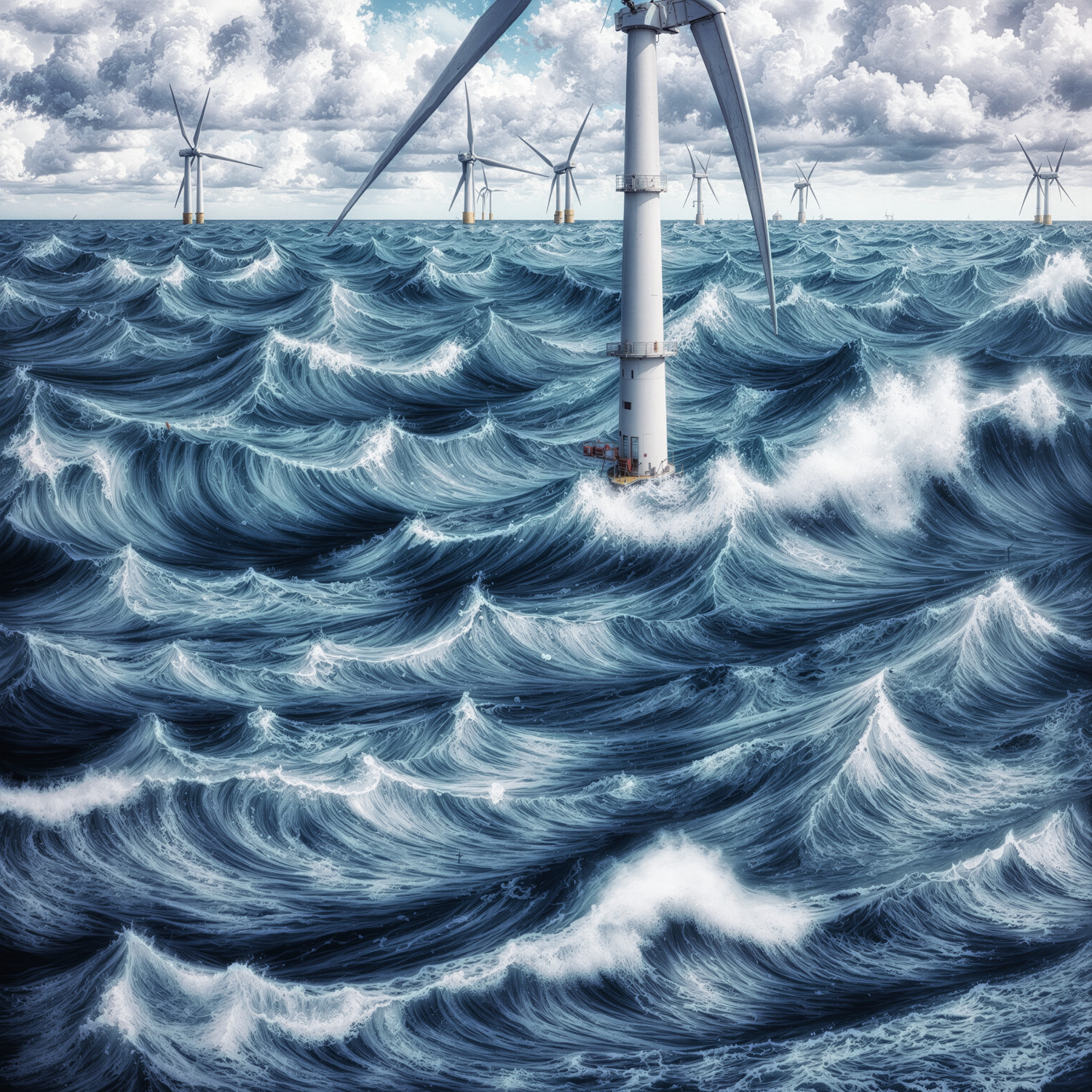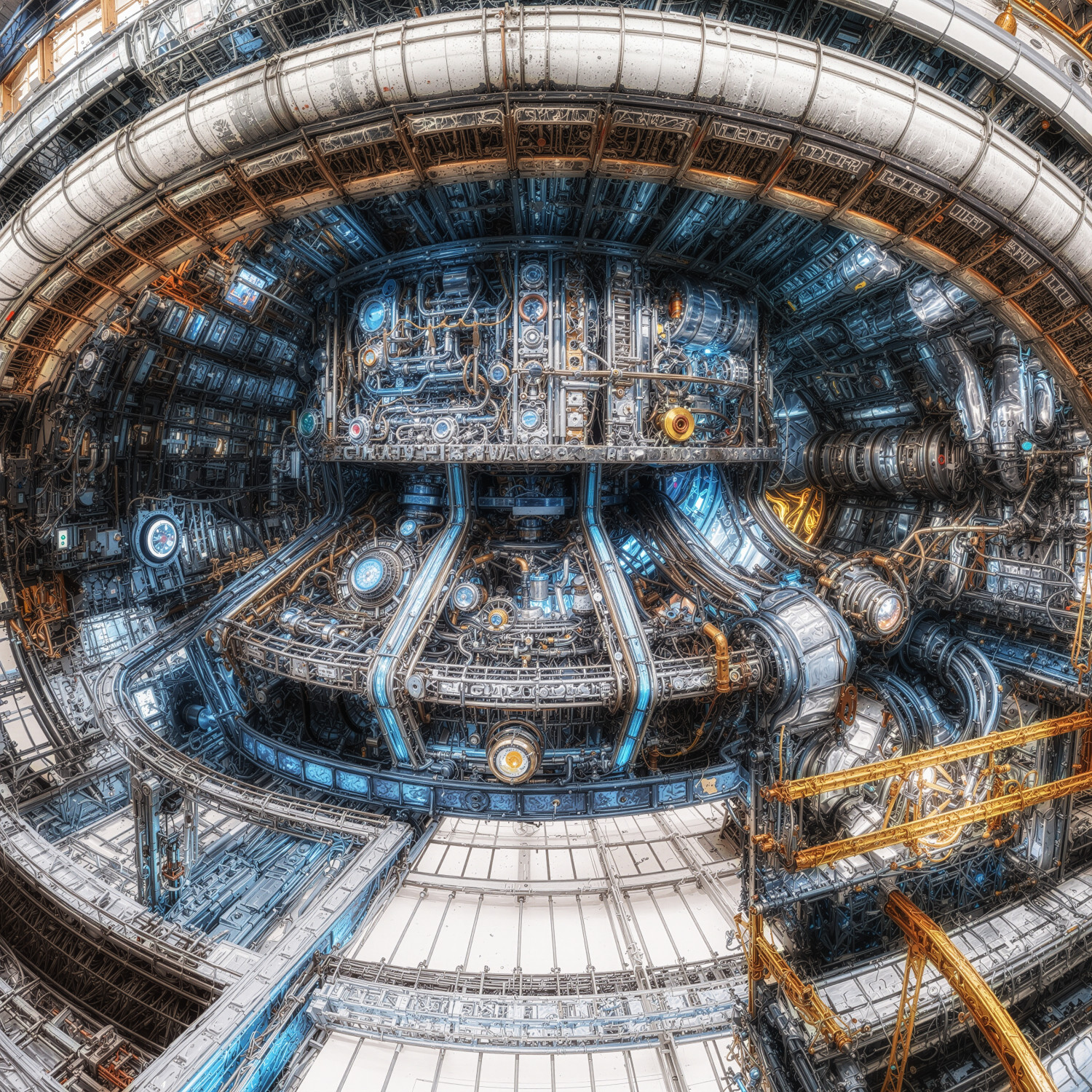
During the 2020's humans continued to build coal-fired power stations, despite deeply concerning evidence based warnings about climate change from the United Nations. Over seventy five new coal-fired powered stations were built in 2023 and these led to an upsurge in carbon dioxide that intensified climate change even further.
Nuclear fission reactors were promoted as zero emission clean energy resources, despite their generating significant amounts of radioactive toxic waist at all stages of their energy production.
The first artwork above represents the importance of renewable energy that uses wind, wave, hydropower, solar, and geothermal (heat from the earth). From the perspective of 2045, it was not until the mid 2030's that these began to be built at sufficient scale to combat climate change, by which time the world had already passed an increase of 2 Celsius in temperature as compared with the pre-industrial world.
The second artwork is of a Fusion Reactor which does not produce the significant quantities of toxic waste associated with Fission Nuclear Reactors. Fusion Reactors use the inert gas helium, and produce and consume low amounts of tritium (a radioactive material with a short half-life). Fusion Reactors are instrumental in meeting the energy demands of humans, but because of low investment and political will during their development, were not made to scale quickly enough to mitigate the worst affects of climate change during the 2030's.
The final artwork shows the devastating after affects of an intense coastal storm that leaves a community in ruins.
. . .

